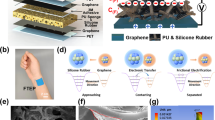Abstract
Prostate cancer is the most common form of cancer in men in Europe and in the USA. Some prostate tumours are stiffer than the surrounding normal tissue, and it could therefore be of interest to measure prostate tissue stiffness. Resonance sensor technology based on piezoelectric resonance detects variations in tissue stiffness due to a change in the resonance frequency. An impression-controlled resonance sensor system was used to detect stiffness in silicone rubber and in human prostate tissue in vitro using two parameters, both combinations of frequency change and force. Variations in silicone rubber stiffness due to the mixing ratio of the two components could be detected (p<0.05) using both parameters. Measurements on prostate tissue showed that there existed a statistically significant (MANOVA test, p<0.001) reproducible difference between tumour tissue (n=13) and normal healthy tissue (n=98) when studying a multivariate parameter set. Both the tumour tissue and normal tissue groups had variations within them, which were assumed to be related to differences in tissue composition. Other sources of error could be uneven surfaces and different levels of dehydration for the prostates. Our results indicated that the resonance sensor could be used to detect stiffness variations in silicone and in human prostate tissue in vitro. This is promising for the development of a future diagnostic tool for prostate cancer.








Similar content being viewed by others
Abbreviations
- PZT:
-
Lead zirconate titanate
- Δf :
-
Measured frequency change
- F :
-
Measured force
- d :
-
Impression depth
- F d :
-
Force at a specific impression depth d
- Δf F :
-
Frequency change at a specific force F
- ∂Δf/∂F :
-
Derivative of Δf with respect to F
- SD:
-
Standard deviation
- CV:
-
Coefficient of variation
- THP:
-
Tumour hit percentage
- d 2 j :
-
Generalized distances in multivariate space
- q c,p :
-
Quantiles of the chi-square distribution with p degrees of freedom
- n N :
-
Number of measurements on normal healthy tissue
- n T :
-
Number of measurements on tumour tissue
References
American cancer society (2006) Cancer facts and figures 2006. American cancer society, Atlanta, pp 9–21
Eklund A, Bergh A, Lindahl OA (1999) A catheter tactile sensor for measuring hardness of soft tissue: measurements in a silicone model and in an in vitro human prostate model. Med Biol Eng Comput 37:618–624
Eklund A, Bäcklund T, Lindahl OA (2000) A resonator sensor for measurement of intraocular pressure - evaluation in an in vitro pig-eye model. Physiol Meas 21:355–367
Eklund A, Hallberg P, Lindén C, Lindahl OA (2003a) An applanation resonator sensor for measuring intraocular pressure using combined continuous force and area measurement, Invest. Ophthalmol Vis Sci 44:3017–3024
Eklund A, Lindén C, Bäcklund T, Andersson BM, Lindahl OA (2003b) Evaluation of applanation resonator sensors for intraocular pressure measurement: results from clinical and in vitro studies. Med Biol Eng Comput 41:190–197
Hallberg P, Lindén C, Lindahl OA, Bäcklund T, Eklund A (2004) Applanation resonance tonometry for intraocular pressure in humans. Physiol Meas 25:1053–1065
Jalkanen V, Andersson BM, Bergh A, Ljungberg B, Lindahl OA (2005) Detection of prostate cancer with a resonance sensor. In: Proceedings of 13th Nordic-Baltic conference on biomedical engineering and medical physics, vol 9. Umeå, Sweden, pp 130–131
Jalkanen V, Andersson BM, Eklund A, Lindahl OA (2002) A resonance senor technique to detect cancer in prostate—model experiments in silicone. In: Proceedings of 12th Nordic-Baltic conference on biomedical engineering and medical physics, vol 2. Reykjavik, Iceland, pp 32–33
Johnson RA, Wichern DW (2002) Applied multivariate statistical analysis. Prentice Hall, Upper Saddle River, pp 183–194
König K, Scheipers U, Pesavento A, Lorenz A, Ermert H, Senge T (2005) Initial experiences with real-time elastography guided biopsies of the prostate. J Urol 174:115–117
Lindahl OA, Omata S (1995) Impression technique for the assessment of oedema: comparison with a new tactile sensor that measures physical properties of tissue. Med Biol Eng Comput 33:27–32
Lindahl OA, Omata S, Ängquist K-A (1998) A tactile sensor for detection of physical properties of human skin in vivo. J Med Eng Technol 22:147–153
Lindahl OA, Ängquist K-A, Ödman S (1991) Impression technique for the assessment of oedema - Technical improvement and methodological evaluation of a new technique. Med Biol Eng Comput 29:591–597
Omata S (1990) New type tactile sensor for sensing hardness like the human hand and its application for living tissue. In: Technical digest of the 9th sensor symposium, pp 257–260
Omata S, Constantinou CE (1995) Modeling of micturition characteristics based on prostatic stiffness modulation induced using hormones and adrenergic antagonists. IEEE Trans Biomed Eng 42:843–848
Omata S, Terunuma Y (1992) New tactile sensor like the human hand and its applications. Sens Actuat 35:9–15
Phipps S, Yang THJ, Habib FK, Reuben RL, McNeill SA (2005a) Measurement of the mechanical characteristics of benign prostatic tissue: a novel method for assessing benign prostatic disease. Urology 65:1024–1028
Phipps S, Yang THJ, Habib FK, Reuben RL, McNeill SA (2005b) Measurement of tissue mechanical characteristics to distinguish between benign and malignant prostatic disease. Urology 66:447–450
Sakai S, Sasai S, Endo Y, Matue K, Tagami H, Inoue S (2000) Characterization of the physical properties of the stratum corneum by a new tactile sensor. Skin Res Tech 6:128–134
Tobocman W, Resnick MI, Pretlow TG (1997) Ultrasound reflections fail to reflect the histopathology of the prostate. Prostate 30:33–40
Acknowledgements
The study was supported by grants from the Objective 1 Norra Norrland—EU Structural Fund and from the Swedish Cancer Society.
Author information
Authors and Affiliations
Corresponding author
Rights and permissions
About this article
Cite this article
Jalkanen, V., Andersson, B.M., Bergh, A. et al. Prostate tissue stiffness as measured with a resonance sensor system: a study on silicone and human prostate tissue in vitro. Med Bio Eng Comput 44, 593–603 (2006). https://doi.org/10.1007/s11517-006-0069-6
Received:
Accepted:
Published:
Issue Date:
DOI: https://doi.org/10.1007/s11517-006-0069-6




